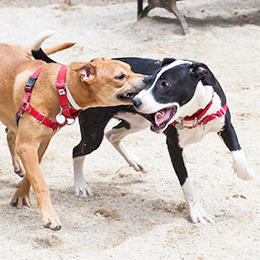10 new Aggression type of dogs
Aggression is the most common and most serious behavior problem in dogs. It’s also the number-one reason why pet parents seek professional help from behaviorists, trainers and veterinarians.
What Is Aggression?
The term “aggression” refers to a wide variety of behaviors that occur for a multitude of reasons in various circumstances. Virtually all wild animals are aggressive when guarding their territories, defending their offspring and protecting themselves. Species that live in groups, including people and dogs, also use aggression and the threat of aggression to keep the peace and to negotiate social interactions.

To say that a dog is “aggressive” can mean a whole host of things. Aggression encompasses a range of behaviors that usually begins with warnings and can culminate in an attack. Dogs may abort their efforts at any point during an aggressive encounter. A dog that shows aggression to people usually exhibits some part of the following sequence of increasingly intense behaviors:
- Becoming very still and rigid
- Guttural bark that sounds threatening
- Lunging forward or charging at the person with no contact
- Mouthing, as though to move or control the person, without applying significant pressure
- “Muzzle punch” (the dog literally punches the person with her nose)
- Growl
- Showing teeth
- Snarl (a combination of growling and showing teeth)
- Snap
- Quick nip that leaves no mark
- Quick bite that tears the skin
- Bite with enough pressure to cause a bruise
- Bite that causes puncture wounds
- Repeated bites in rapid succession
- Bite and shake
- Dogs don’t always follow this sequence, and they often do several of the behaviors above simultaneously. Many times, pet parents don’t recognize the warning signs before a bite, so they perceive their dogs as suddenly flying off the handle. However, that’s rarely the case. It can be just milliseconds between a warning and a bite, but dogs rarely bite without giving some type of warning beforehand.

Classification of Aggressive Behavior
If your dog has been aggressive in the past or you suspect she could become aggressive, take time to evaluate the situations that have upset her. Who bore the brunt of her aggression? When and where did it happen? What else was going on at the time? What had just happened or was about to happen to your dog? What seemed to stop her aggression? Learning the answers to these questions can clarify the circumstances that trigger your dog’s aggressive reaction and provide insight into the reasons for her behavior. You need an accurate diagnosis before you can hope to help your dog.
Aggressive behavior problems in dogs can be classified in different ways. A beneficial scheme for understanding why your dog is aggressive is based on the function or purpose of the aggression. If you think of aggression this way, you can determine what motivates your dog to behave aggressively and identify what she hopes to gain from her behavior.
Risk Factors
If you’re deciding whether to live with and treat your aggressive dog, there are several factors to consider because you, as the pet parent, are ultimately responsible for your dog’s behavior. These factors involve the level of risk in living with your dog and the likelihood of changing her behavior:
Size. Regardless of other factors, large dogs are more frightening and can inflict more damage than small dogs.
Age. Young dogs with an aggression problem are believed to be more malleable and easier to treat than older dogs.
Bite history. Dogs who have already bitten are a known risk and an insurance liability.
Severity. Dogs who stop their aggression at showing teeth, growling or snapping are significantly safer to live and work with than dogs who bite. Likewise, dogs who have delivered minor bruises, scratches and small punctures are less risky than dogs who have inflicted serious wounds.
Predictability. Dogs at the highest risk of being euthanized for aggression are those who give little or no warning before they bite and who are inconsistently, unpredictably aggressive. Dogs who give warning before they bite allow people and other animals time to retreat and avoid getting hurt. As counterintuitive as it might seem, it’s easier to live with a dog who always reacts aggressively when, for instance, every time you push him off the bed than a dog who does so only sporadically.
Targets. How often your dog is exposed to the targets of her aggression can affect how easy it is to manage and resolve her behavior. A dog who’s aggressive to strangers is relatively easy to control if you live in a rural environment with a securely fenced yard. A dog who’s aggressive to children can be managed if her pet parents are childless and have no friends or relatives with children. A dog who is aggressive to unfamiliar dogs poses little difficulty for pet parents who dislike dog parks and prefer to exercise their dog on isolated hiking trails. In contrast, living with a dog who has recurring ear infections and bites family members when they try to medicate her can be stressful and unpleasant.
Triggers. Are the circumstances that prompt your dog to behave aggressively easy or impossible to avoid? If your dog only guards her food while she’s eating, the solution is straightforward: Keep away from her while she’s eating. If no one can safely enter the kitchen when your dog’s there because she guards her empty food bowl in the cupboard, that’s another story. If your dog bites any stranger within reach, she’s a lot more dangerous than a dog who bites strangers only if they try to kiss her.
Ease of motivating your dog. The final consideration is how easy it is to motivate your dog during retraining. The safest and most effective way to treat an aggression problem is to implement behavior modification under the guidance of a qualified professional. Modifying a dog’s behavior involves rewarding her for good behavior—so you’ll likely be more successful if your dog enjoys praise, treats and toys. Dogs who aren’t particularly motivated by the usual rewards can be especially challenging to work with, and the likelihood of such a dog getting better is small.







